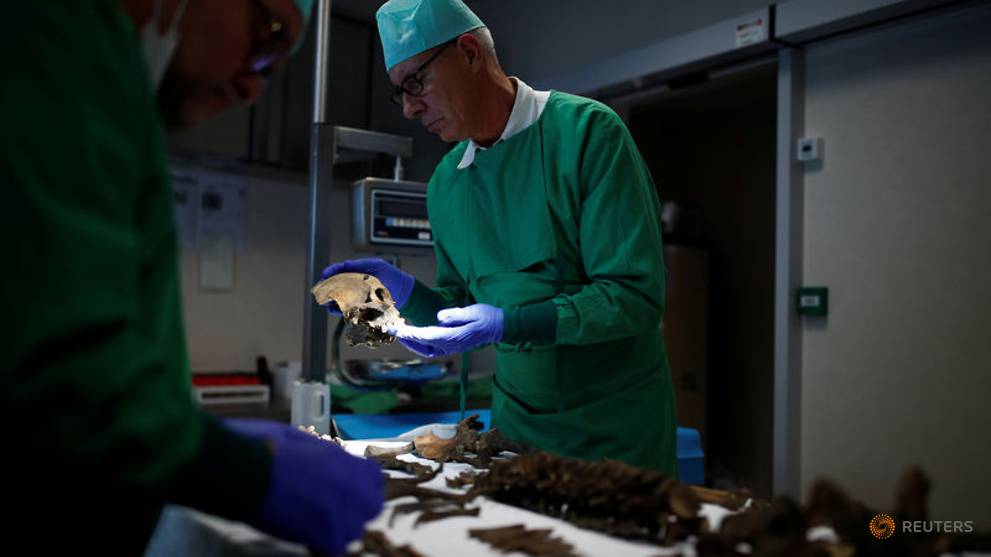A century after WW1, the search for a soldier's identity

VERDUN, France (Reuters) - In a hospital mortuary in eastern France, the forensic doctor Bruno Fremont examines a gaping hole in the skull of a soldier killed by shrapnel a century ago, at the Battle of Verdun during World War One.
Laid out on a white sheet are the combatant’s near-complete skeleton, many of the bones blackened, and his leather boots, the laces tied tight. What’s missing is the soldier’s ID tag.
For months, Fremont has searched for clues as to the identity of the soldier, whose remains were found in March by workmen resurfacing a road. He has all but lost hope. A DNA test is useless without a known relative to compare against.
“A tag is the only item that would have allowed us to formally identify him,” said Fremont, acknowledging the sadness and frustration of not being able to make an identification.
“The boots are those that were on his feet when he died, and they are French army boots. But they’re not proof of his nationality. On his left side he carried a wallet that contained two French coins. And we found a gas mask near his skull, a French-issued M2 gas mask.
“So in all likelihood he was French. But we cannot be wholly certain.”
A century after the end of the war, President Emmanuel Macron will lead commemorations to mark the anniversary this weekend. World leaders will attend, including U.S. President Donald Trump and German Chancellor Angela Merkel.
But even as the world marks the passage of so much time since the conflict, the tumult it caused continues to affect families whose relatives never returned from the battlefields.
The Battle of Verdun, fought between French and German troops for much of 1916, was the longest and among the deadliest of World War One. Altogether, almost 300,000 soldiers were killed.
Even now the ground continues to give up the fallen.
On Tuesday, Macron lit a flame at the Douaumont Ossuary, a memorial containing the remains of soldiers who died at Verdun and where Fremont’s skeleton will be interred if it cannot be identified.







